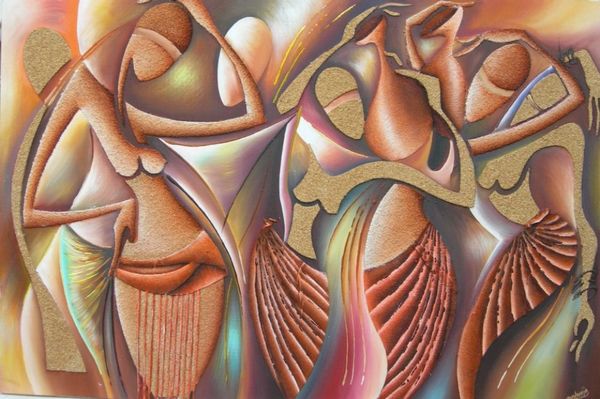SO excited to learn about Rwandan visual artists! TO do this I started with a search that yielded an article in a Rwandan Newspaper called The New Times. I have read really good informative articles about Rwanda in their Online page. This newspaper “was established less than a year later as the country’s first English-language paper to inform and educate a new era in the nation’s peace and development.” (1)
It always hard to choose which artists to showcase here as I only have a limited amount of time. I usually choose the artists by their importance to the art scene of the country/world, for their career depth and also by my personal taste. I also strive to include at least one woman. Thank you for understanding that I cannot choose more.
Epa Binamungu
Epaphrodite (Epa) Binamungu, a self-taught artist, is a vibrant force in the Rwandan art scene. His life and work are a testament to artistic passion, experimentation, and a deep connection to his homeland. He was born in Rwanda in 1954. At the age of five he moved the Democratic Republic of Congo where he grew up exploring artistically.
Drawing and painting became a natural and vital part of his life, a constant companion through his years. His parents pushed him to have a more secure career so he studied biology and chemistry graduating in 1977, but he quickly found a way to follow his lifelong passion and became a committed artist. Unlike many artists who follow a formal education path, Epa honed his skills independently, developing a unique voice that reflects his personal experiences and observations.
Epa’s artistic style has evolved over his five-decade career. While he initially explored realist depictions, his work has gradually shifted towards abstraction. This allows him to evoke emotions and ideas in a more expressive way, using vibrant colors and dynamic forms to tell his stories.
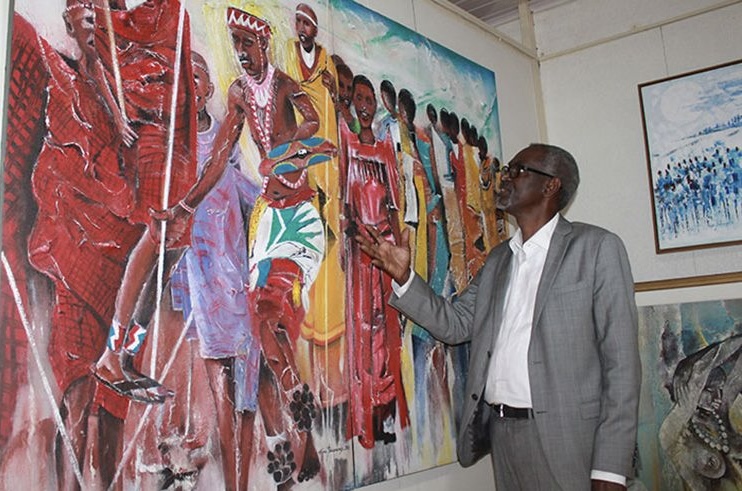
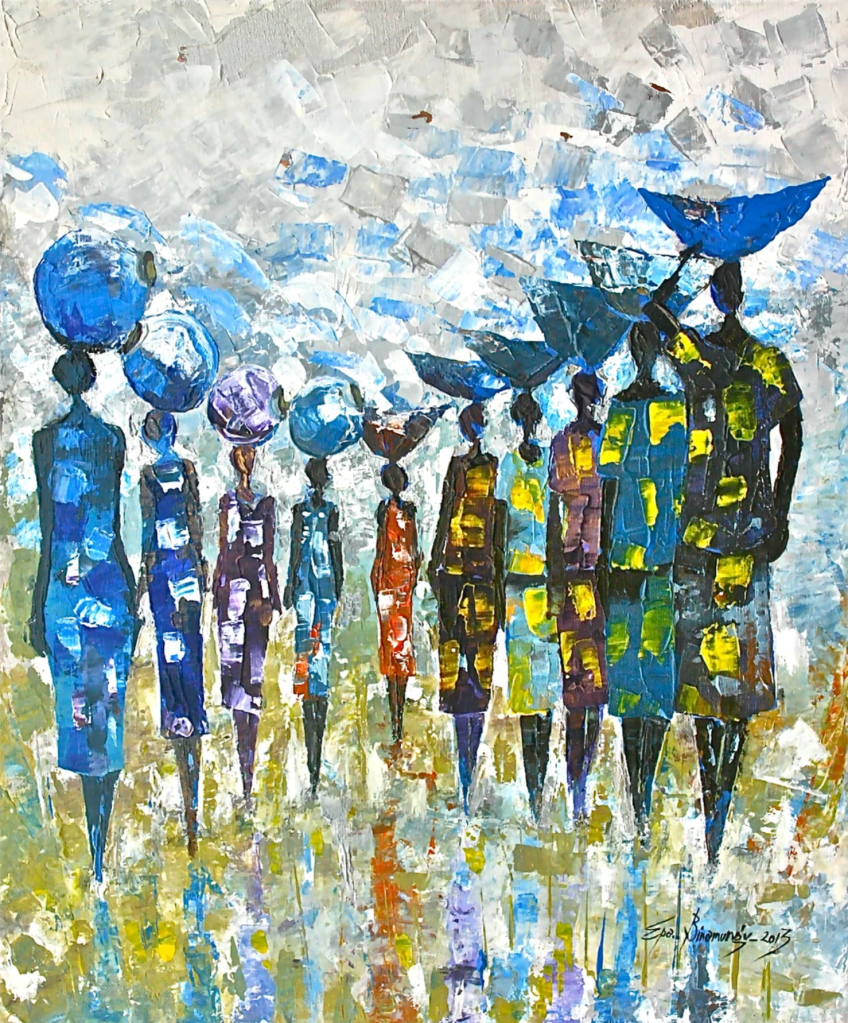
Epa Binamungu. Young Girls. 2013
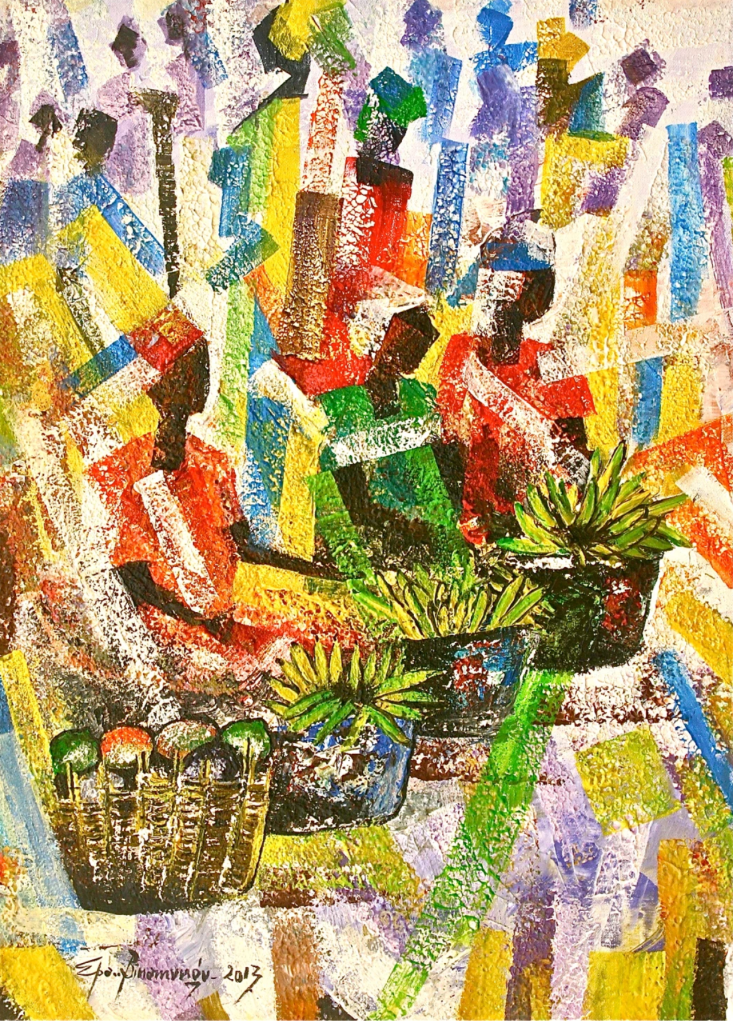
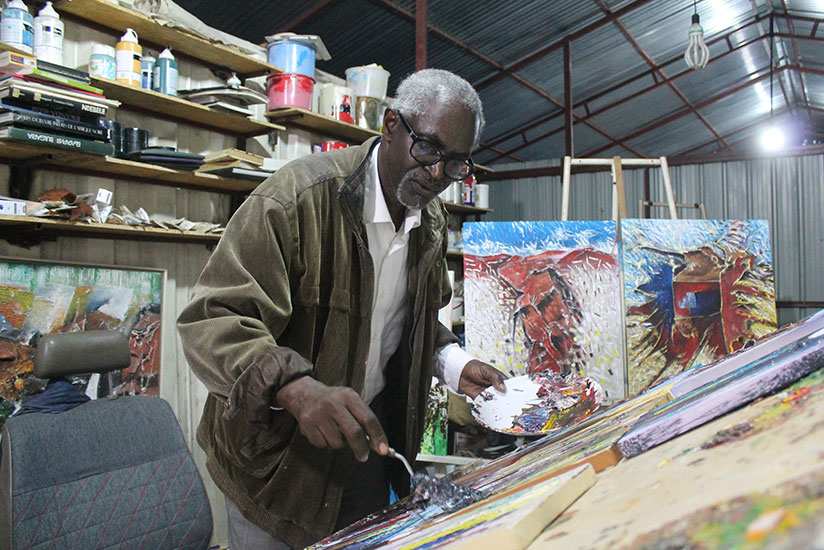
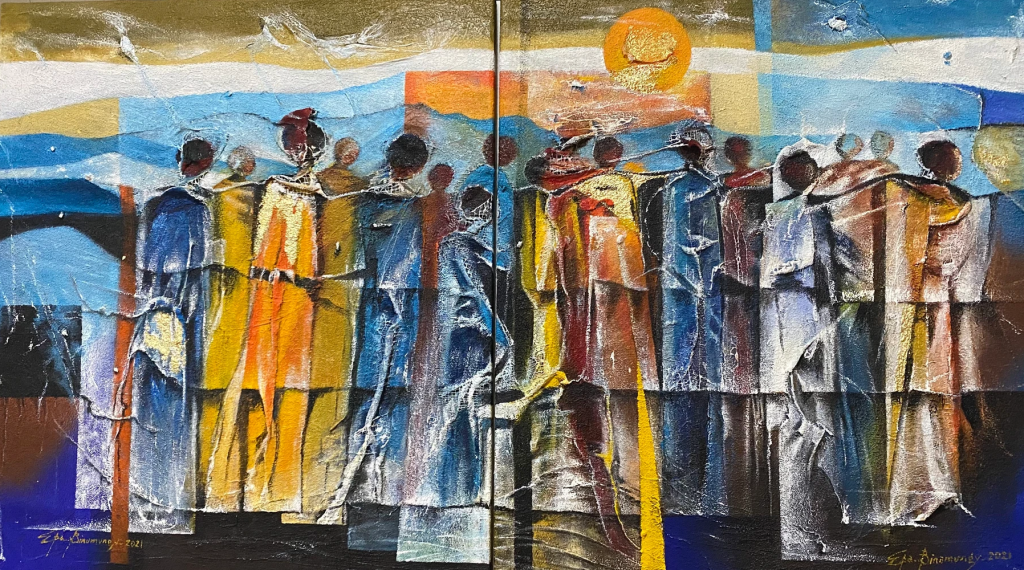
Epa Binamungu. To the Destination. 2021
Epa’s artistry extends beyond the canvas. He embraces a rich materiality in his work, incorporating elements like sand, fiscus, wood, and even objects like pearls and shells. This textural approach adds depth and dimension to his pieces, reflecting the multifaceted nature of life itself.
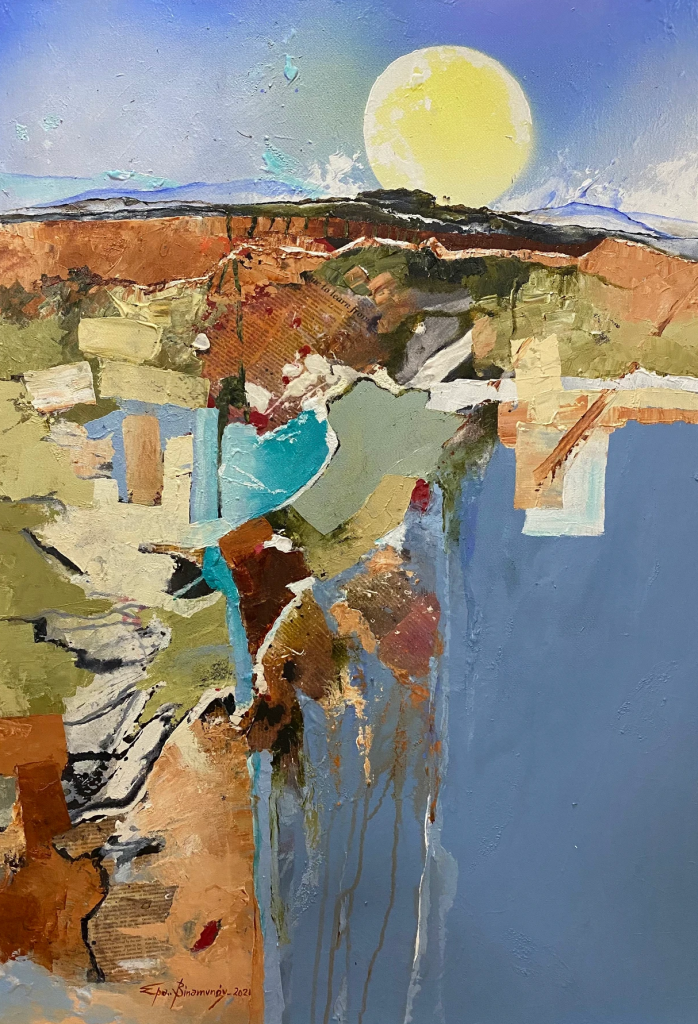
Epa Binamungu. Learning form the past. 2021
Epa’s dedication to art extends beyond his own creations. In 2014, he established the Inganzo Art Centre in Kigali. This space serves as a platform for him to showcase his work, but more importantly, it fosters a sense of community by bringing together regional and international artists. Through the Inganzo Art Centre, Epa contributes to the growth and vibrancy of the Rwandan art scene.
Epa Binamungu’s life and art are deeply intertwined with Rwanda. His use of local materials and his exploration of themes related to life and roots all speak to a profound connection to his homeland. Through his creativity and dedication, Epa Binamungu has become a prominent voice in Rwandan art, sharing his unique perspective with the world.
Pascal Bushayija
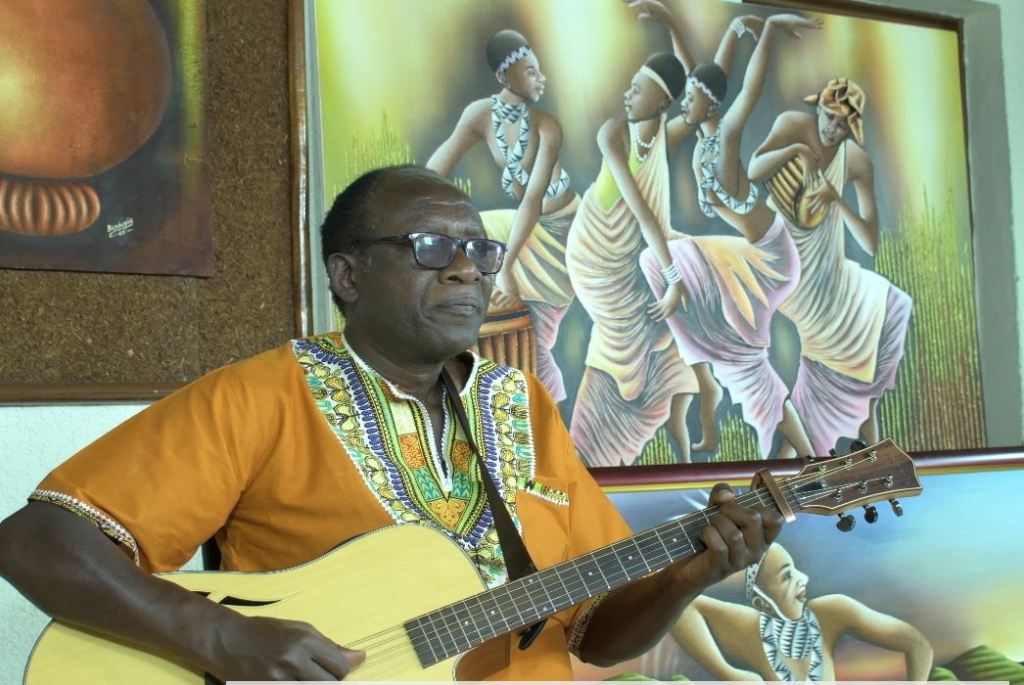
Born 1957 in Gisenyi, Rwanda, Pascal Bushayija’s artistic journey began in primary school. Back then, Rwandan visual art was dominated by imigongo, traditional cow dung paintings. Despite his passion for drawing, Bushayija faced disapproval from his parents. Undeterred, Bushayija turned to secret sketching, finding focus and even academic success through his hidden art. This love for art, nurtured in secrecy, only grew stronger with time.
Pascal finished primary school with a burning desire to pursue art. Luckily, he discovered Ecole d’art Nyundo in Gisenyi, Rwanda’s only art school near his home. Determined, he took matters into his own hands. Without his parents’ knowledge, he interviewed with the teachers and secured a coveted spot. However, a new hurdle emerged: tuition. Pascal’s father, a doctor, envisioned a medical career for his son. With his uncle’s support, Pascal eventually convinced his father to allow him to attend the school and cover the fees.
Driven to prove art’s value, Pascal embarked on a mission of self-reliance. By his third year, he started using his artistic talents to pay his own way. He sold his artwork and even helped the school with government and corporate commissioned projects. Earning his own keep filled Pascal with pride. He not only covered his education, but also bought himself stylish clothes and shoes – items his father couldn’t afford at the time.
Fresh out of high school, Pascal landed a creative job at a nearby tea factory, designing their advertisements. After a successful four-year stint, he was offered a prestigious opportunity: returning to his alma mater, Ecole d’art Nyundo, as an art teacher.
For eleven years, Pascal thrived as an educator, mastering and teaching a whopping six artistic disciplines. Notably, the school embraced international collaboration. European teachers shared their expertise, and visiting artists and specialists kept the curriculum fresh and dynamic.
Pascal’s forward-thinking spirit shone in his fifth year of teaching. He championed the inclusion of girls in the school, paving the way for a more diverse student body. Unfortunately, his tenure was tragically cut short by the 1994 Rwandan genocide. The school, a victim of the violence, was looted and forced to close its doors temporarily.
In 1996, Pascal Bushayija relocated from Gisenyi to Kigali, determined to establish himself as an independent artist. He collaborated with the small circle of artists working in Kigali at the time, most notably his fellow Rwandan artist Epaphrodite Binamungu. Bushayija’s dedication to depicting Rwandan culture through his art has resonated with local audiences. Unlike many Rwandan artists whose clientele is primarily expatriates and tourists, Bushayija has found success selling his work to Rwandan buyers. He attributes this to the popularity of his pieces as gifts for weddings and other social celebrations.
Pascal Bushayija’s art is characterized by bold colors and simple forms. He creates his paintings using a unique mixed-media technique. First, he sketches out his design with pencil. Then, he fills in the shapes with a combination of paint and natural materials like sawdust. This sawdust comes from local carpentry shops, and different tree types provide him with a range of colors. Different tree types produce different colors. The tree types that Bushayija uses most often are called ribuyu, which can be found in the DRC, a multicolored umusave, which is from Rwanda, and a tree that is yellow in color from Uganda.
Bushayija typically paints figures who are intertwined and appear to be caught in motion: they are dancing or drumming, holding babies, cradling pots, or carrying baskets on their heads.
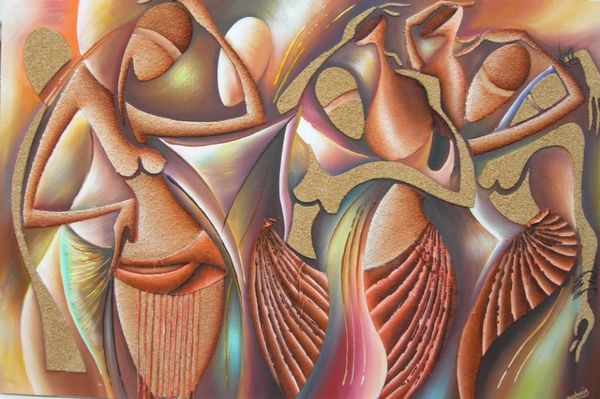

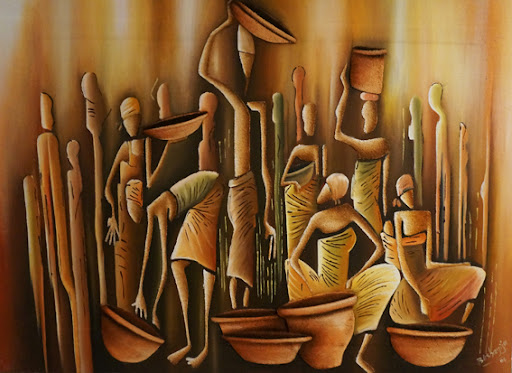
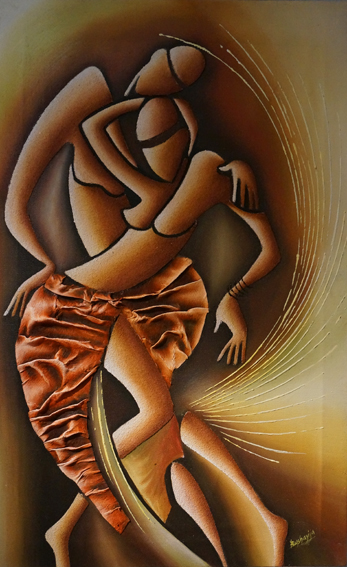
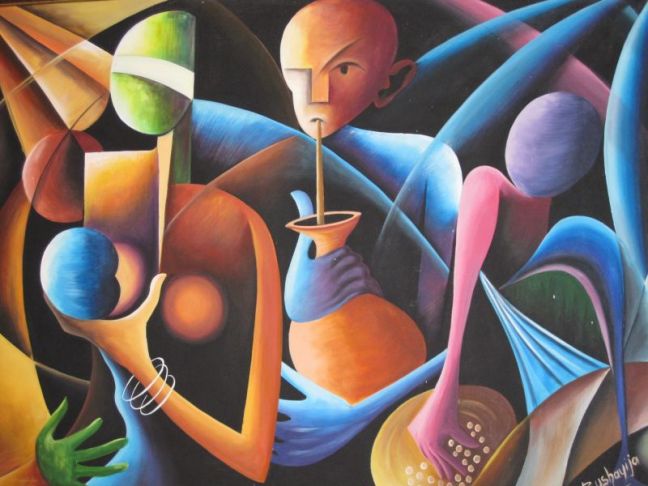
He is also a musician that composes, sings and plays the guitar. He has recorded and plays in concerts. This is his YouTube Channel and this is one of his videos:
There is such melancholy in this song…
A veteran of the Rwandan art scene, Bushayija is admired for his role in inspiring younger generations of artists. He actively shares his knowledge by returning to the art school near his hometown as a guest teacher and mentor. Bushayija’s artwork has become integrated into the fabric of Rwandan life, adorning homes, government buildings, and the National Art Gallery. His work has even achieved international recognition, gracing the walls of Bourbon Coffee shops in Kigali, as well as major cities like Boston, New York, and Washington D.C. Despite this acclaim, Bushayija remains grounded, working from his studio in Nyamirambo, a vibrant neighborhood in Kigali.
Boston!!! I was so excited! I looked up the coffee shop and there were two. Sadly they are both permanently closed. They are beautiful! I found these photos:


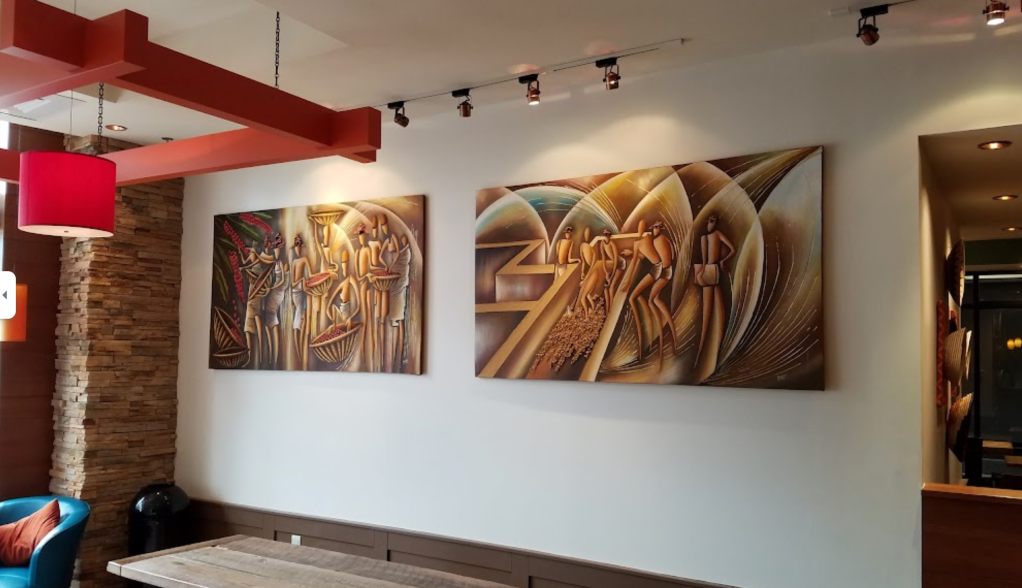
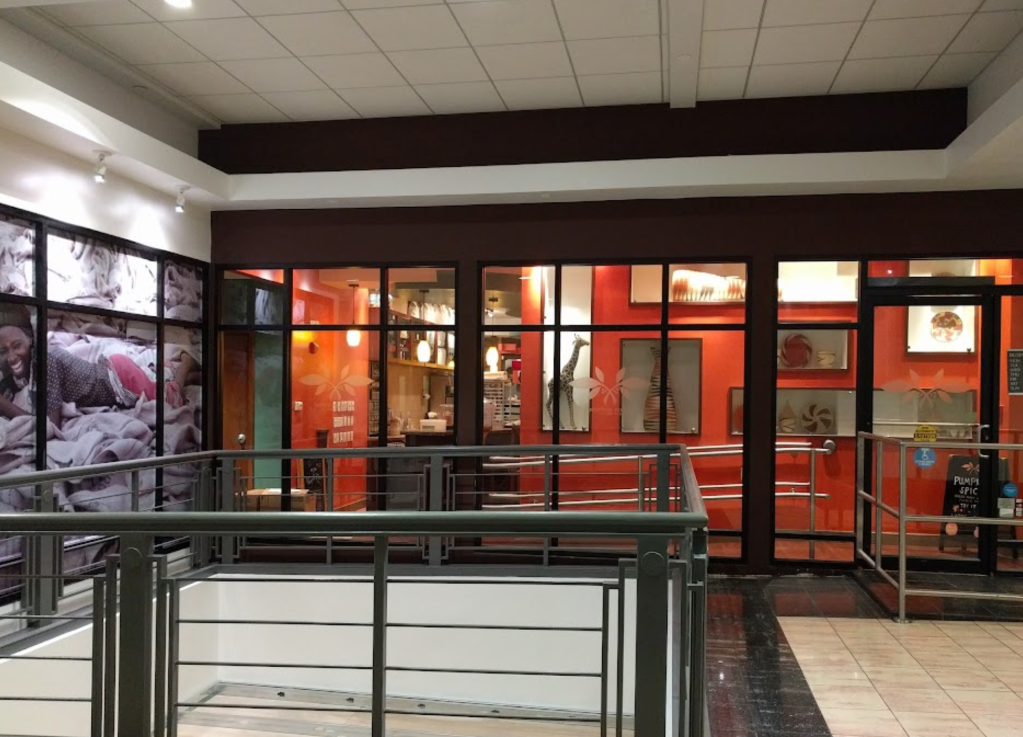
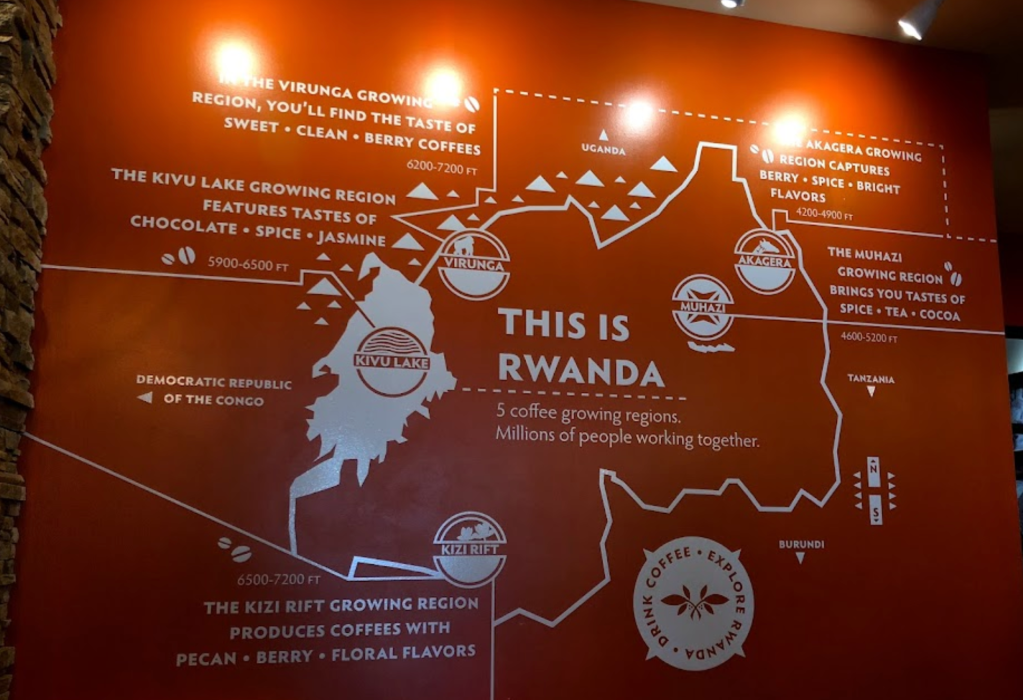
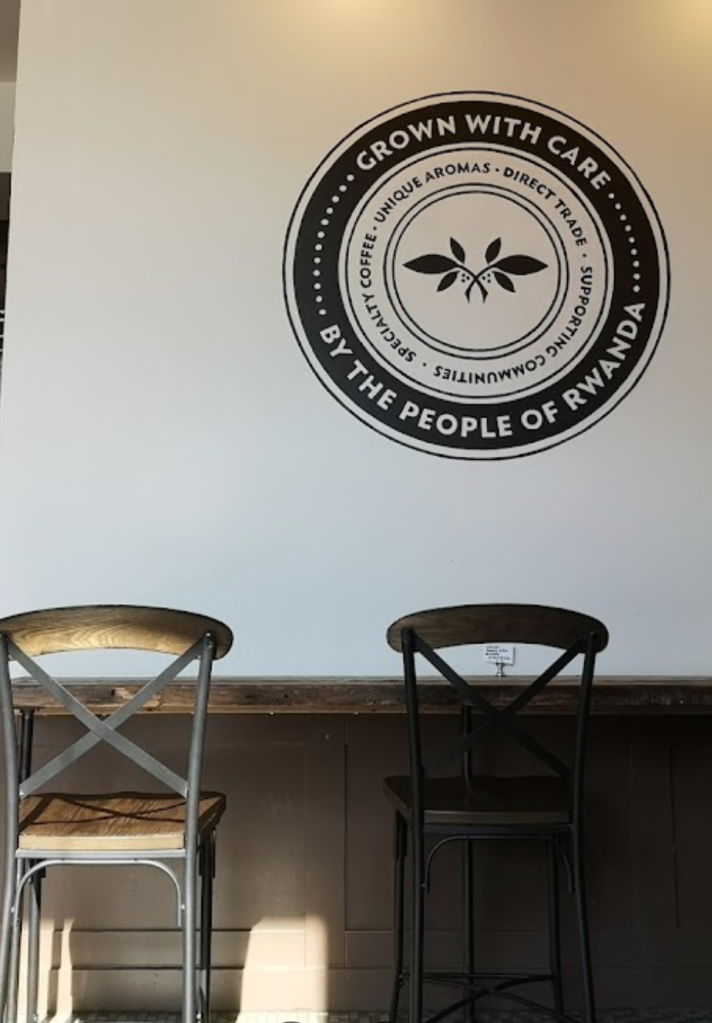
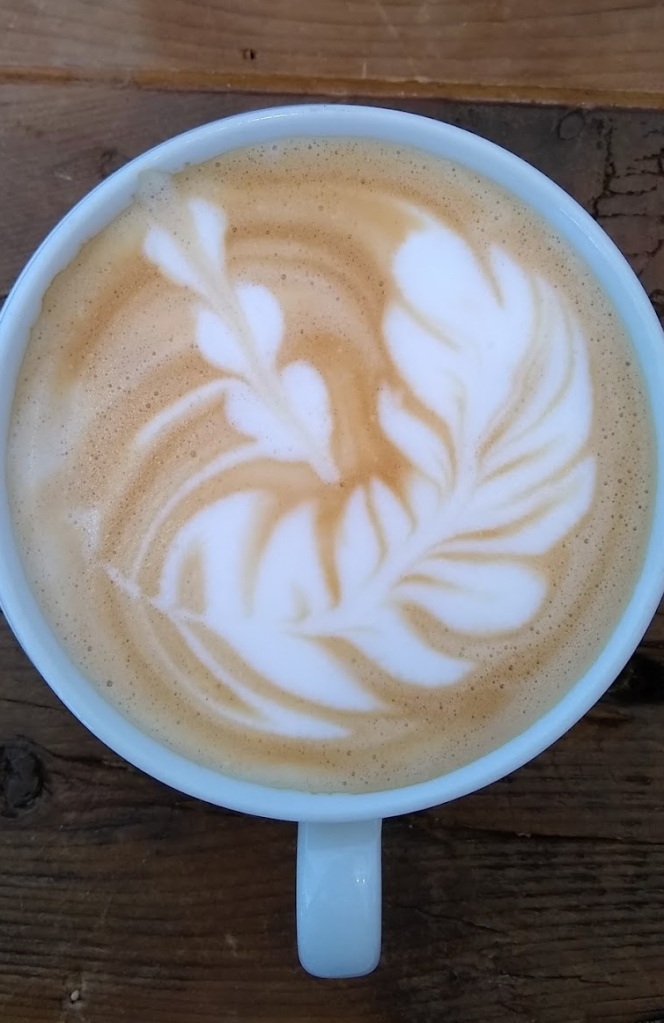
Isn’t it so cool?! Website with its history. So sad they are closed… even the New York one.
Crista Uwase
Crista Uwase was born in Fort Portal, Uganda in 1988. Though self-taught, she further honed her skills at the Asiko Art School program in Addis Ababa, Ethiopia in 2016. Her signature style? Layered collages bursting with color and texture. She meticulously tears magazine paper, using the variety of weights, textures, and colors to create stunning visual narratives. Since attending the Asiko program, her focus has sharpened, placing women at the center of her art. This dedication to showcasing female experiences even landed her a spot in the “Women Without Borders” exhibition at the Institut Français in Kinshasa, highlighting the achievements of Rwandan women artists.
She has stated that being a female artist in Rwanda has not been easy. Crista shared that there’s a strong belief that art is a man’s world and that working in this male-dominated environment has been challenging, filled with negativity and stereotypes. But, she refuses to let it break her. In fact, it has fueled her determination. She shared that ever since she participated in a workshop in 2013, this sparked in her a love affair with paper as her artistic medium. Since then, she traded paintbrushes for torn paper, using vibrant scraps to create her artwork, one piece at a time.
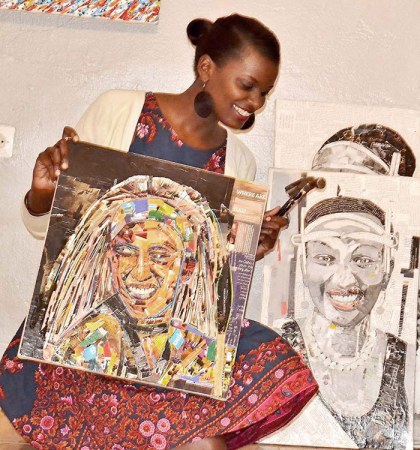
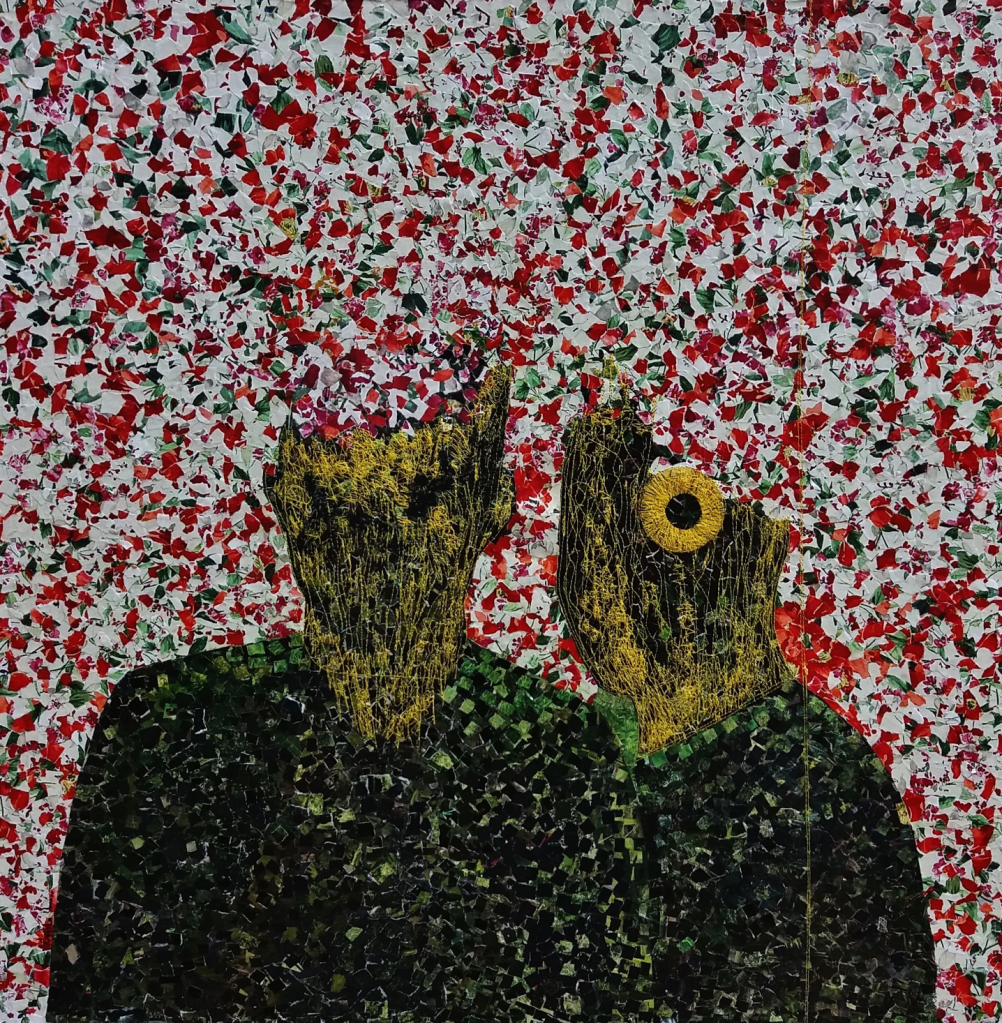
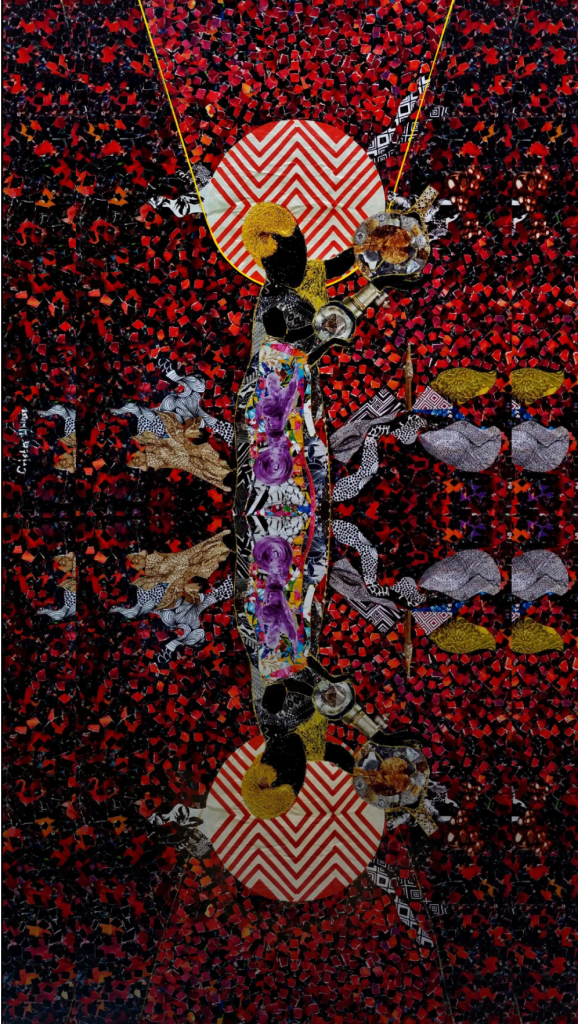
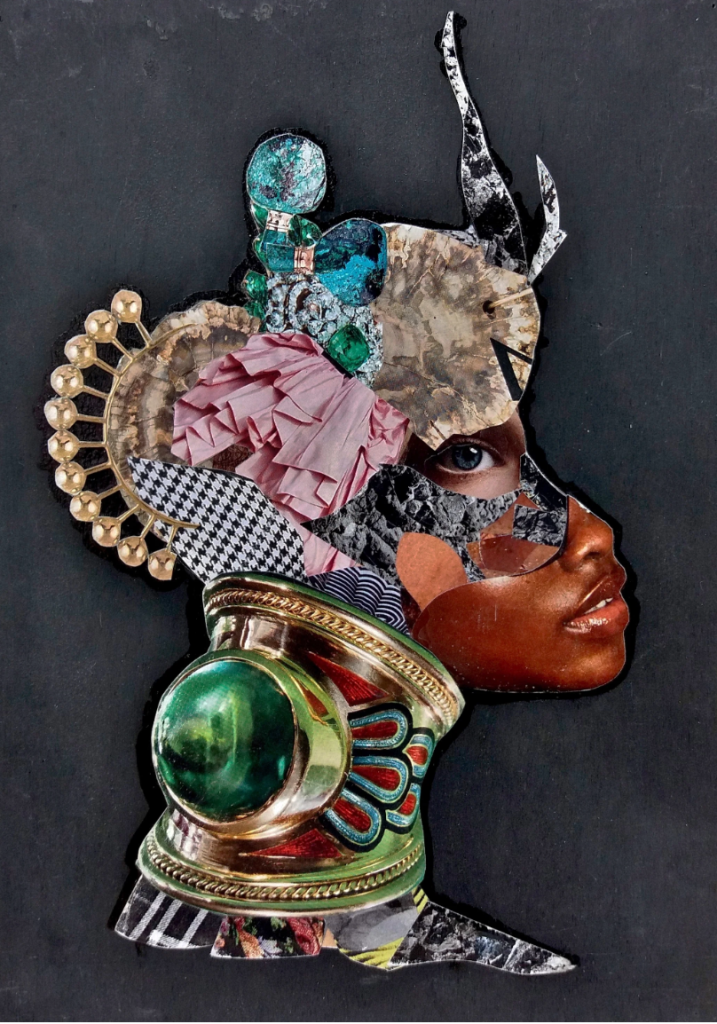
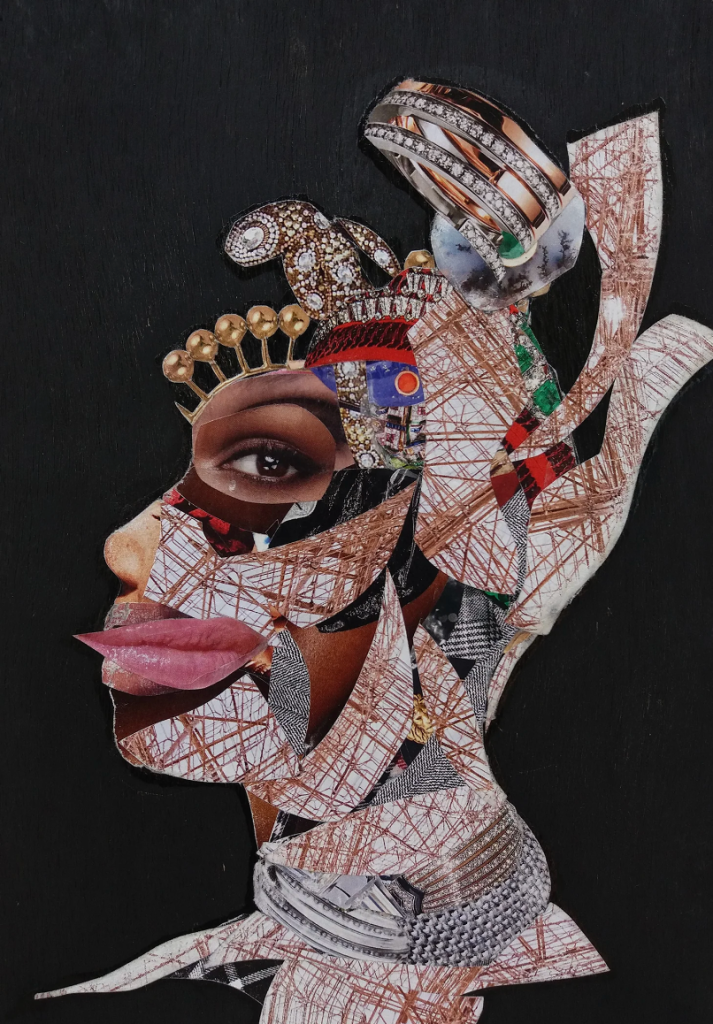
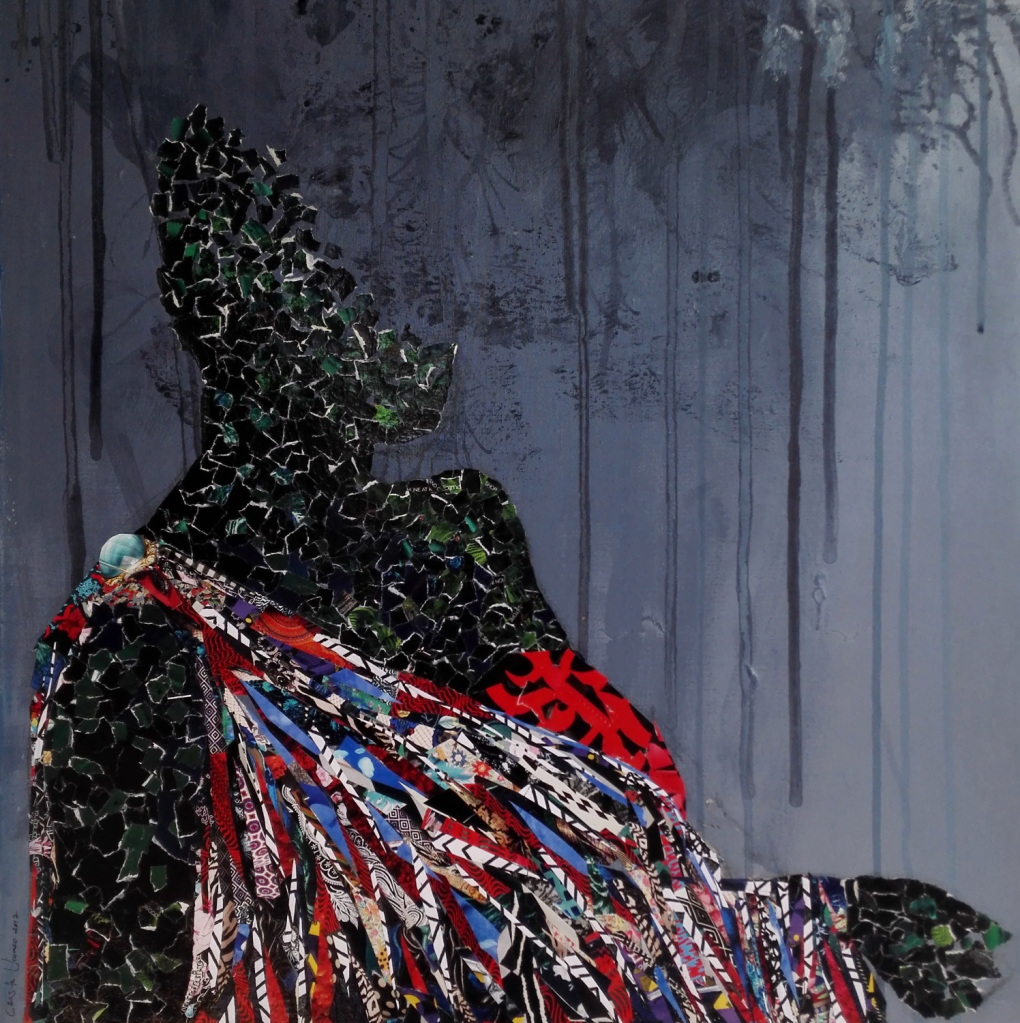
And this is her current art. You can purchase it HERE!
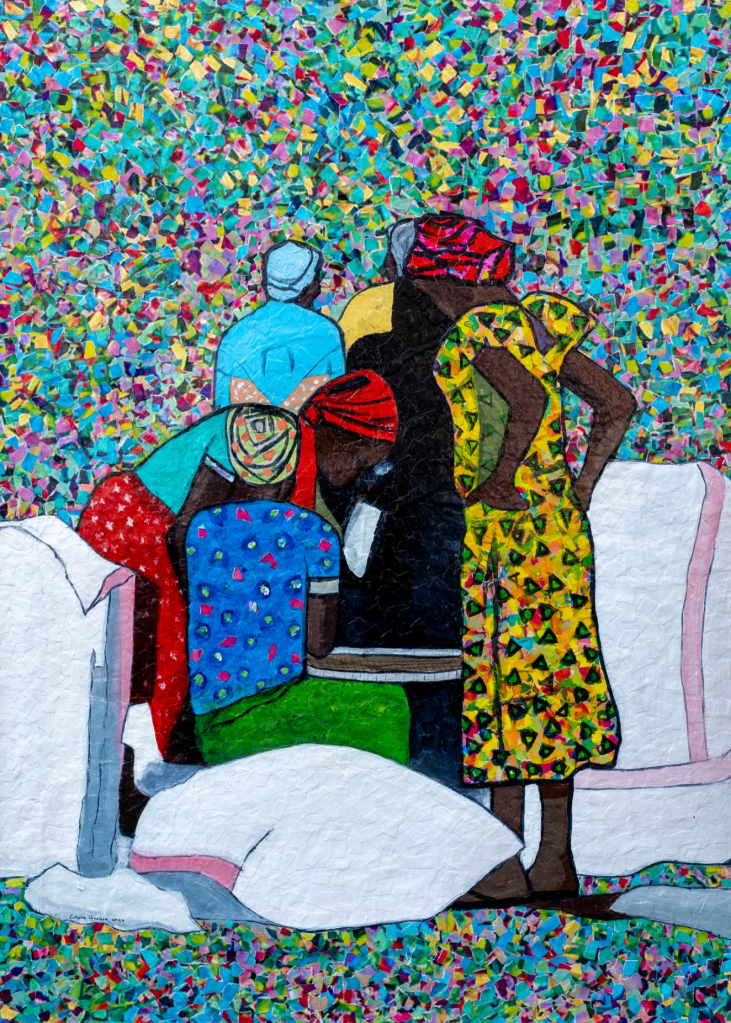
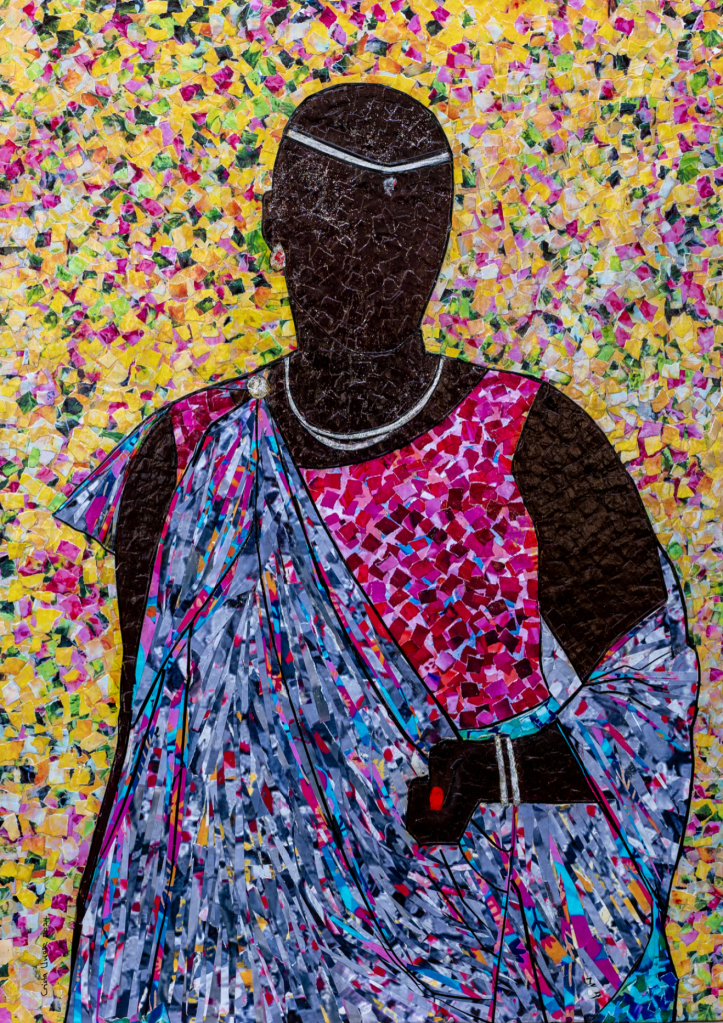
To end this post I take my leave with two Google Arts Articles about Rwandan Artists.
Art for Peace: A Look Into The Rwanda Art Museum Collection.
and
5 Rwandan Contemporary Women Artists
You can also read about more about these artists and others by looking at my sources below. Thank you for coming along!
Soon you will find out which of these artists inpired Rwanda’s Angel!
Sources:
Artists in General
1. Newspaper Online. The New Times. Rwanda. Article about visial artists.
Epa Binamungu
1. Article about Epa Binamungu.
2. Epa Binamungu Artist Website
Pascal Bushayija
1. Blog. Post by Beatrice Spadacini
2. Blog. Post by Talia Lieber
Crista Uwase
1. Artists Website. Here
2. Artsy. net profile. Here
